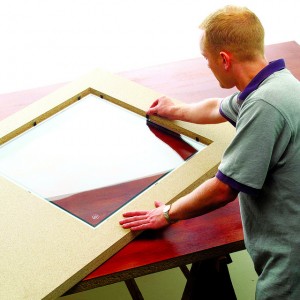Fire resistant glass fraud lands two in court
A Toomebridge father and son duo appeared in front of a judge last month in Northern Ireland to answer charges that they fraudulently claimed glass they’d sold was fire-resistant. Seamus and James Laverty, the latter of whom was the former safety director for Glassworks Ireland, are alleged to have supplied ordinary laminated glass to nearly 40 commercial installations, while representing that the glass was fire-resistant.
Fake fire resistant glass ended up in schools, hospitals
The Lavertys are alleged to have misrepresented the glass to schools, hospitals, nursing homes, churches, universities and businesses throughout the UK between 2010 and 2013. The case will be a complex one, because each of the allegedly fraudulent glass must be tested to determine its fire-safety potential.
Fire resistant glass is required in some commercial buildings. It can provide occupants with valuable time to escape during a fire. Fire resistant glass is most commonly used (and required) in Europe. The total market for fire resistant glass is expected to approach $6B by 2019 and has an estimated annual growth rate of more than 12.5%.
Fire resistant glass has a current market potential of about $50 million in North America, but the market is expected to grow as new building regulations come into effect. Increasingly, fire resistant glass – which had been primarily marketed for fireplaces – is being required in building stairwells, since they are the primary escape route for buildings on fire. Most fire-resistant glass is currently manufactured in Europe and shipped to North America for installation. Not surprisingly, European regulations and North American regulations on the use of fire –resistant glass differ.
Fire resistant glass is about 15 times thicker than regular glass and 5-6 times heavier. The characteristics of the finished glass require significant changes to the machinery used to manufacture it. A benefit of fire-resistant glass is that it can provide as much as 120 minutes of fire-resistance, which can provide ample time to evacuate a commercial structure.
Glassprimer™ glass paint offers a thermal resistance of about 350° F, but building fires typically generate temperatures of about 1,000° before “flashover,” and as high as 1,800° F after flashover, when a building is fully engulfed in flames.
If you’d like more information about Glassprimer™ glass paint, please visit the rest of our site. If you’d like to purchase Glassprimer™ glass paint, please visit our online store .
Photo Credit: Fire Door Inspection Scheme, via Flickr.com

